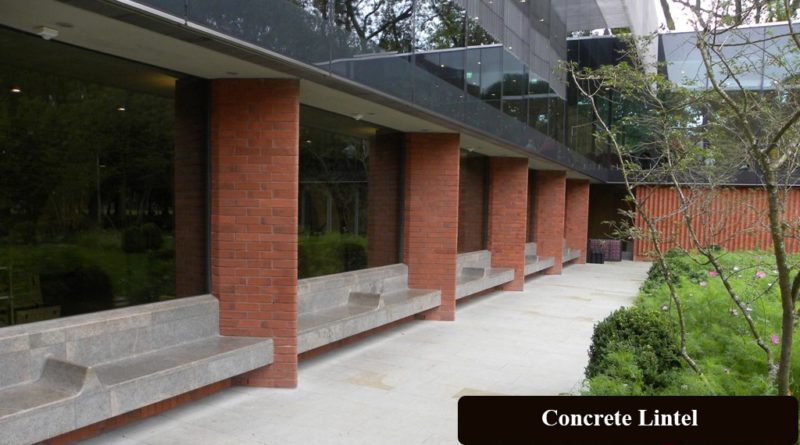How would you introduce a concrete lintel in an existing wall?
What is a Lintel?
A lintel is an auxiliary help over an opening, permitting burdens to be moved to the establishments without pointless pressure put upon casings, for example, windows or entryways. A solid wall lintel ought to have adequate quality and firmness and be made of a material that is good with the brickwork it bolsters. Ordinarily, lintels are produced using the accompanying materials:
Electrifies or treated steel
Fortified or prestressed concrete lintels installation
Fortified or prestressed brickwork stone
General Installation Tips for Steel and Concrete Lintels
1. The lintel ought to be had relations with on mortar and leveled both along the lintel and over its width. Full blocks, squares, or pad stones ought to be utilized as bearing zones. Try not to shoulder lintels onto cut squares.
2. Before establishment, the lintel ought to be analyzed cautiously for any imperfections, or indications of harm.
3. All outer wall lintels must be introduced with an adaptable sodden confirmation course or hole plate.
4. Stonework must not overhang any spine by more than 25mm.
5. Workmanship over the supreme lintels load tables lintel ought to be permitted to fix before applying floor or rooftop loads.
Tips for Concrete Lintels
6. Suggested orientation are 100mm for openings of up to 1m, and 150mm for openings over 1m.
7. Least suggested lintel profundity is 140mm so as to assimilate the stun stacking of a concrete floor.
8. Precast ground surface units ought to be laid on a mortar bed over the entire wall width and ought not be hauled over backings.
Tips for Steel Lintels
9. Inward and external leaves bolstered by the lintels ought to be raised together to keep away from unreasonable flightiness of stacking.
10. On account of cavity walls, the depression plate ought to expand at the very least 50mm past the hole return.
11. The base prescribed bearing length is 150mm.
12. Composite lintels ought to be enough propped during development, at most extreme habitats of 1.2m. The props ought not to be evacuated until the mortar has restored.
13. For channel lintels guarantee that the inward leaf channel is filled very much restored stonework before work continues over. Stonework should be assembled firmly against the vertical area of the channel and a Cement Particle Boards joint added to the highest point of the brickwork so the heaps from units above are spread equally over the inward spine of the lintel.
14. For RS lintels (moved steel lintels) a base heading of 200mm is required.
15. RS lintels must be along the side limited and sufficiently propped during development at most extreme 1.2 meter places.
How are Lintels Introduced?
Lintels are lifted into position while developing brickwork, which might be done physically or with the help of a crane. Typically a little hole is left over a window or door jamb, to guarantee that the lintel is supporting the heap, just as taking into account minor developments, for example, settlement of establishments or expanding of the edge itself. This is especially pertinent if timber outlines are introduced, as timber frame lintels will in general swell or agreement relying on natural factors, for example, dampness substance or temperature.
When introducing a lintel it is critical to cling to the accompanying great practices:
Be mindful so as not to chip the lintels covering — Corrosion security is a basic segment in guaranteeing that the lintel introduced doesn’t cause basic harm later on. Dampness needs just the littlest of the presented zone to infiltrate, making zones of rust and making the lintel grow.
The vertical leg of a steel lintel ought to consistently be the most noteworthy — Careful counts are made off-site to guarantee that the concrete shuttering plywood gave is sufficient to help the heap above it. On the off chance that the lintel is mistakenly introduced, the lintel may never again have the option to help the heap and may obviously avoid after some time, making loads be place upon outlines.
Brickwork ought not to overhang steel lintels by more than the permissible separation — Brickwork ought not overhang lintels by more than 25mm, as a more noteworthy shade may make level splitting the brickwork above.
Brickwork ought to have mortar pressing between block and steel lintel — A mortar pressing between the block and the lintel guarantees that the lintel doesn’t bend while in administration.
Satisfactory bearing ought to be accomplished at either side of the lintel — A lintel will require a specific measure of spread or bearing either side of the initial that it bolsters. This is to guarantee that the lintel doesn’t divert under the heap that it is supporting.
Will my structure examiner watch that lintels are enough introduced?
Top It-All Building construction materials supplier Inspections will check the consistency of lintel establishment at each plate stature review.
Lamentably at reasonable fulfillment it can’t check the entirety of the things above, as a structure monitor will be not able to look down the hole once the rooftop spread has been introduced. Moreover, Concrete Building Products are additionally required inside over specific openings, which will be not able to be surveyed if the entirety of your inner walls have just been put.
We have seen lintel rebelliousness both inside and remotely, so it is imperative to consider reviews at each phase of the structure procedure. To see our structure investigation costs just as the reserve funds that you can make by consolidating assessments, it would be ideal if you visit our structure review costs page.
